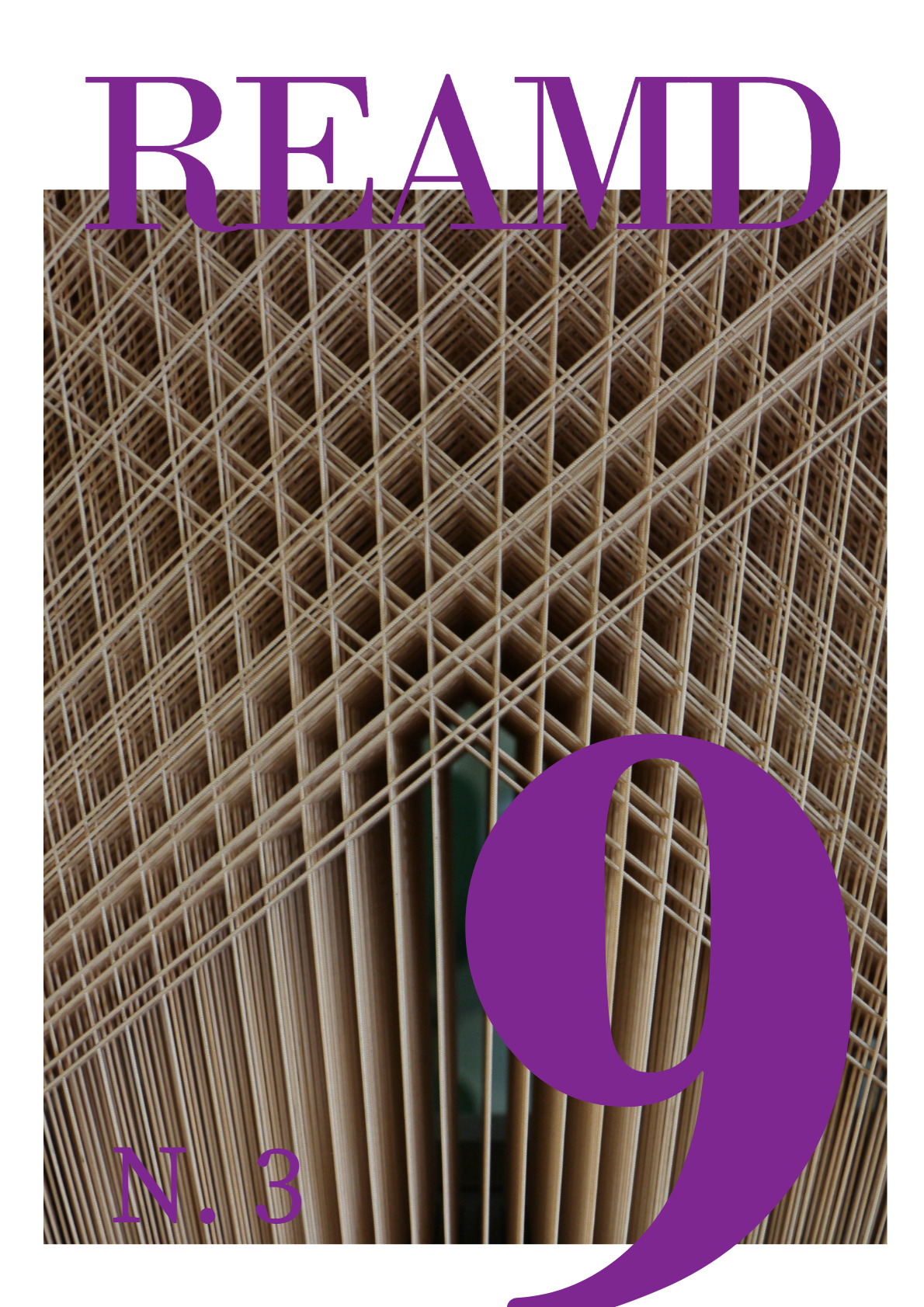Projetos de produtos de moda e práticas do design na economia circular: sustentabilidade e cultura material no cotidiano do consumo
DOI:
https://doi.org/10.5965/25944630932025e7519Parole chiave:
design de produtos, sustentabilidade, consumo, economia circularAbstract
Downloads
Riferimenti bibliografici
ABUZIED, H.; SENBEL, H.; AWAD, M.; ABBAS, A. A review of advances in design for disassembly with active disassembly applications. Engineering Science and Technology, an International Journal, [S. l.], v. 23, n. 3, p. 618-624, jun. 2020. DOI: 10.1016/j.jestch.2019.07.003. Disponível em: https://www.sciencedirect.com/science/article/pii/S2215098619305956. Acesso em: 25 jul. 2025.
ARMSTRONG, C. M. et al. Sustainable product-service systems for clothing: exploring consumer perceptions of consumption alternatives in Finland. Journal of Cleaner Production, v. 97, p. 30-39, 15 jun. 2015. DOI: https://doi.org/10.1016/j.jclepro.2014.01.046.
ASHBY, M. F. Materials and the environment: eco-informed material choice. 2. ed. Oxford: Butterworth-Heinemann, 2012.
COSTA, M. R. C.; SILVA, M. E.; DUARTE, M. de F. Sustainable consumption and practice theories: connecting elements of clothing sharing. BBR. Brazilian Business Review, Espírito Santo, v. 21, n. 1, e20211182, 2024. DOI: https://doi.org/10.15728/bbr.2021.1182.en. Disponível em: https://www.scielo.br/j/bbr/a/gddyNQTscpfHYTSYmQ5nq5P/. Acesso em: 28 jul. 2025.
DAN, M. C.; CIORTEA, A.; MAYER, S. The refashion circular design strategy — changing the way we design and manufacture clothes. Design Studies, [S.l.], v. 88, p. 101205, set. 2023. Disponível em: https://doi.org/10.1016/j.destud.2023.101205. Acesso em: 26 jul. 2025.
DEN HOLLANDER, M. C.; BAKKER, C. A.; HULTINK, E. J. Product design in a circular economy: development of a typology of key concepts and terms. Journal of Industrial Ecology, v. 21, n. 3, p. 517-525, jun. 2017. DOI: https://doi.org/10.1111/jiec.12610.
DESLANDES, S. F.; GOMES, R.; MINAYO, M. C. de S. (Compiladores). Pesquisa social: teoria, método e criatividade. São Paulo: Vozes, 2025. (Série Manuais Acadêmicos).
EARLEY, R.; GOLDSWORTHY, K. Designing for fast and slow circular fashion systems: exploring strategies for multiple and extended product cycles. In: PLATE CONFERENCE, 1., 2015, Nottingham. Anais [...]. Nottingham: Nottingham Trent University, 2015.
ELLEN MACARTHUR FOUNDATION. Vision of a circular economy for fashion. 2020. Disponível em: https://content.ellenmacarthurfoundation.org/m/7a6b4c98ea57
ce7b/original/Vision-of-a-circular-economy-for-fashion.pdf. Acesso em: 24 jul. 2025.
FLETCHER, K. Sustainable fashion and textiles: design journeys. 2. ed. London: Routledge, 2014.
FLETCHER, K.; GROSE, L. Fashion and sustainability: design for change. London: Laurence King Publishing, 2012.
GIL, A. C. Como elaborar projetos de pesquisa. São Paulo: Atlas, 2019.
GWILT, A. A practical guide to sustainable fashion. 2. ed. London: Bloomsbury Publishing, 2020. (Basics Fashion Design).
MANZINI, E.; VEZZOLI, C. O desenvolvimento de produtos sustentáveis: os requisitos ambientais dos produtos industriais. São Paulo: Edusp, 2011.
McDONOUGH, W.; BRAUNGART, M. Cradle to cradle: remaking the way we make things. New York: North Point Press, 2002.
MOISANDER, J.; PESONEN, S. Narratives of sustainable ways of living: constructing the self and the other as a green consumer. Management Decision, v. 40, n. 4, p. 329-342, 2002. DOI: https://doi.org/10.1108/00251740210426321
MORENO, M. et al. A conceptual framework for circular design. Sustainability, v. 8, n. 9, p. 937, 2016. DOI: https://doi.org/10.3390/su8090937.
NIINIMÄKI, K. (org.). Sustainable fashion in a circular economy. Helsinki: Aalto ARTS Books, 2018.
RAMZAN, M. B.; HABIB, M. S.; OMAIR, M.; NAEEM, J.; MUSTAFA, H.; IQBAL, M. W.; MALIK, A. I. Role of design for disassembly in educating consumers for circular behavior. Sustainability, Basel, v. 15, n. 21, p. 1–19, 31 out. 2023. Disponível em: https://doi.org/10.3390/su152115505. Acesso em: 25 jul. 2025.
RECKWITZ, A. Toward a theory of social practices: a development in culturalist theorizing. European Journal of Social Theory, v. 5, n. 2, may 2002. DOI: https://doi.org/10.1177/13684310222225432.
SCHATZKI, T. R. The site of the social: a philosophical account of the constitution of social life and change. University Park: Pennsylvania State University Press, 2003.
SHOVE, E.; PANTZAR, M.; WATSON, M. The dynamics of social practice: everyday life and how it changes. London: SAGE Publications, 2012.
STAHEL, W. R. The circular economy: a user's guide. London: Routledge, 2019.
UNITED NATIONS ENVIRONMENT PROGRAMME – UNEP. A framework for shaping sustainable lifestyles: determinants and strategies. Nairobi: UNEP, 2016. Disponível em: https://wedocs.unep.org/. Acesso em: 24 jul. 2025.
Downloads
Pubblicato
Come citare
Fascicolo
Sezione
Licenza
Copyright (c) 2025 José Eduardo Vilas Bôas, Maria Sílvia Barros de Held

TQuesto lavoro è fornito con la licenza Creative Commons Attribuzione 4.0 Internazionale.
- Gli autori conservano i diritti d'autore e concedono alla rivista il diritto della prima pubblicazione, con l'opera simultaneamente licenziata sotto la Licenza Creative Commons Attribuzione 4.0 Internazionale, la quale permette:
1. Condividere — copiare e ridistribuire il materiale su qualsiasi supporto o in qualsiasi formato, per qualsiasi fine, anche commerciale.
2. Adattare — remixare, trasformare e creare a partire dal materiale per qualsiasi fine, anche commerciale. Il licenziante non può revocare questi diritti finché vengono rispettati i termini della licenza.
In accordo con le seguenti condizioni:
1. Attribuzione — È necessario attribuire la paternità dell'opera in maniera appropriata, fornire un link alla licenza e indicare se sono state effettuate delle modifiche. Questo deve essere fatto in qualsiasi circostanza ragionevole, ma non in modo tale che suggerisca che il licenziante avalli l'utilizzatore o il suo utilizzo.2. Nessuna restrizione aggiuntiva — Non è possibile applicare termini legali o misure tecnologiche che limitino legalmente altri dallo fare qualsiasi cosa la licenza permetta.
-
Il plagio, in tutte le sue forme, costituisce un comportamento editoriale eticamente scorretto ed è inaccettabile. Questa rivista utilizza il software di controllo della similarità iThenticate.






